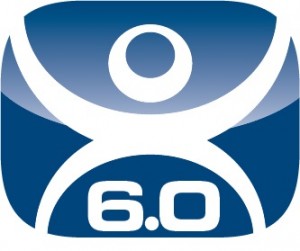
Everything you read about thin clients, zero clients, or anything other than a PC will tell you there is a device that is better and saves you more money compared to their competition. More often than not, these claims are validated by a report paid for by a hardware manufacturer that only talks about their specific client matched up against another client chosen as comparative fodder because they know they can beat it. These reports are not false, nor are they inaccurate. They are, however, slanted to omit where the savings really are to paint a far prettier picture. After all, their first, last, and only reason for commissioning such a report is to sell you their newest hardware release.
As this practice has evolved and become more pervasive over the last decade, it has become nearly impossible to tell what your actual “Return On Investment” (ROI) will be to upgrade hardware when converting to a non-PC system. History has taught us over time that unmanaged PCs cost more money than managed PCs. On average, most companies realize a savings between 20% and 30%. However, even that number depends on what factors and variables are included in a specific ROI equation. For many hardware manufacturers, those factors only include data relating directly to their client such as power usage and client purchase price.
Here is an example:
An OS security patch is released which requires a client reboot after it is applied. In a managed system, when and how to apply the patch is determined by productivity, production, work stoppage, and application acceptance. This will allow the system administrator to find the best time and method to apply the patch with the least possible loss of production. With an unmanaged system there is no logical methodology applied to the decision of how and when to apply the patch.
How do you calculate ROI?
Now the question becomes “How does a managed system actually save me money?” Expanding on the example above, the managed system does cost more to operate over time, but prevents more loss than the unmanaged system. In the unmanaged system, the only variables considered are the individual user, the client, and the OS, which needs to be patched. Without a system in place, there is no control over system efficiency or implementation of necessary patches and upgrades. If you have ever attended a meeting, seminar, or webinar and witnessed the presenter’s machine update and reboot while in the middle of their script, then you have an idea of how random an unmanaged client or system truly is.
Now that we have discussed managed versus unmanaged, lets get back to the larger issue of actual ROI when upgrading to a managed system. Yes, thin clients can save you money based on the comparative hardware cost between them and PCs in many instances, although the price of both continue to drop and are not all that far apart depending on what you are looking to buy. But the larger point to make here is that when you read a report stating that moving to thin clients will save you 52%, it is assuming that you have travelled back in time ten years when industrial manufacturing still used PCs in an unmanaged system. Once again, this is a statistic blown out of proportion to encourage you to buy new hardware from the manufacturer that paid a company to create a report stating that moving to thin clients will save you 52%.
The true savings when switching to thin clients is in the management of the system. Most thin client systems have little to no management, and if they do they stop at the client. With that type of system architecture, they can’t offer advanced features like Load Balancing or application publishing. They might talk about it, but when push comes to shove, they actually rely on a third party program or domain feature to deliver it to you.
ThinManager manages clients AND their connections to servers, creating a well managed environment which creates the most efficient systems possible. This, in turn, provides a high ROI regardless of the hardware purchased because the best possible Return on Investment comes from reducing downtime, not from purchasing a client that uses a minimal amount of electricity.
While there are many companies touting many reports to flaunt their reported savings, it is imperative to remember that those numbers are based on very specific examples and comparatives. Management, not hardware, is the key to getting a system in place that will save you money now, and for years to come.
Visit our site at http://www.thinmanager.com/roi/index.php to determine your potential Return on Investment by using a ThinManager ready thin client management system.